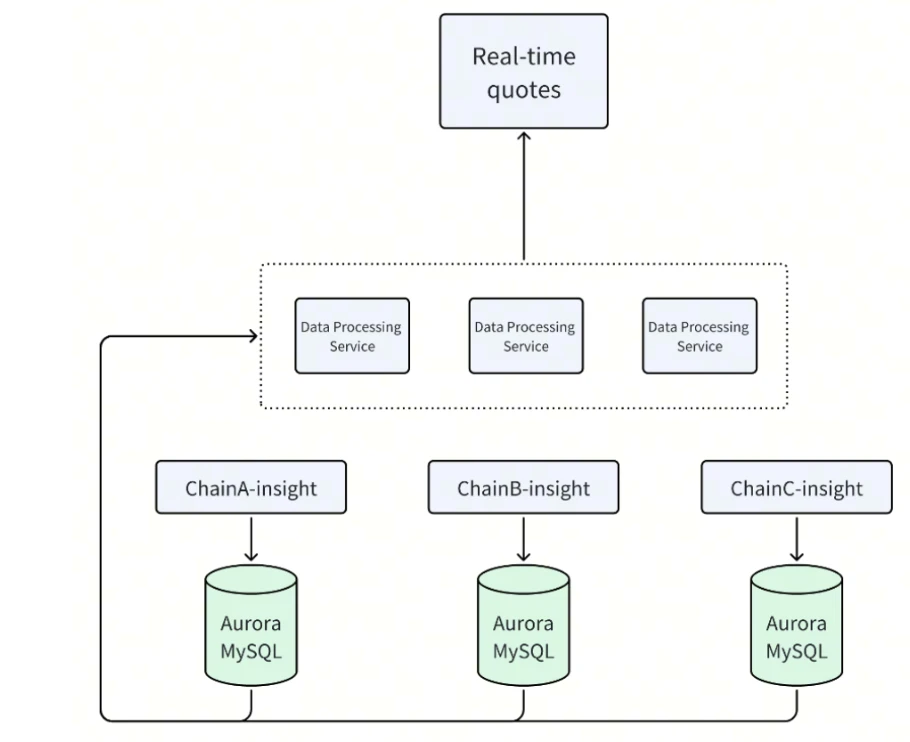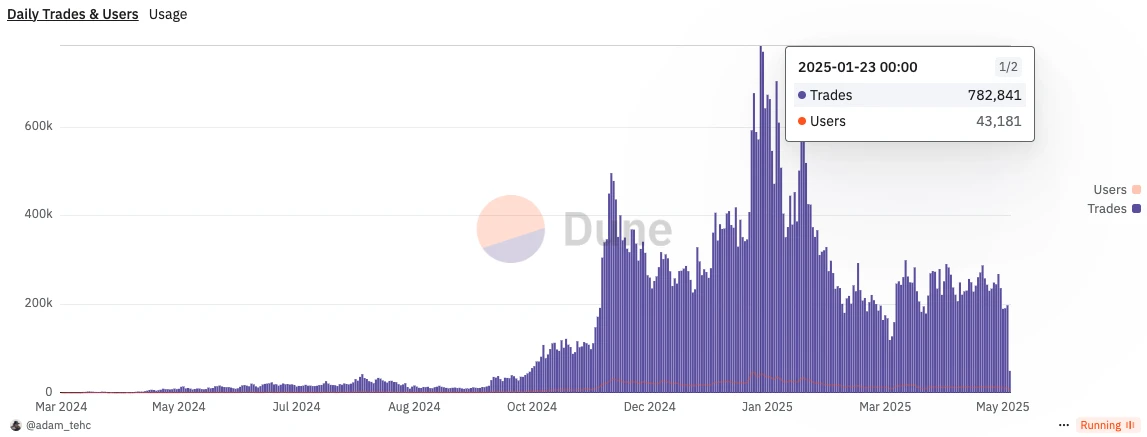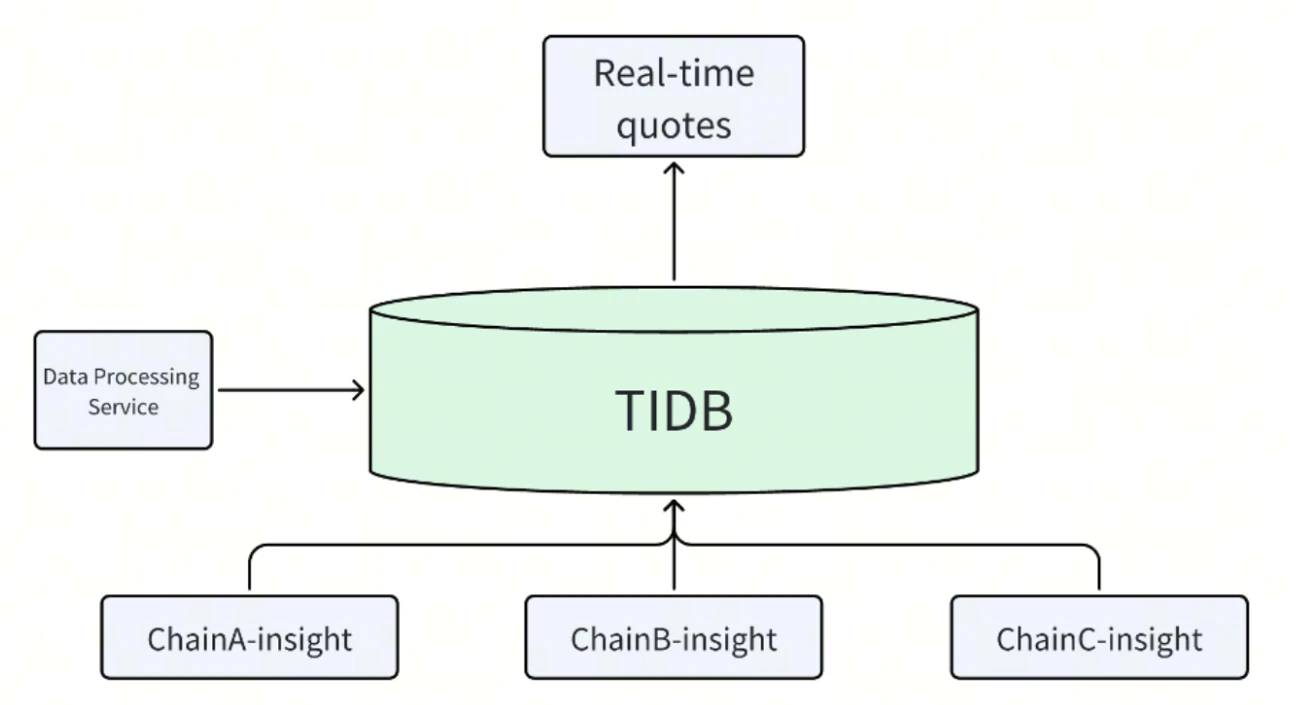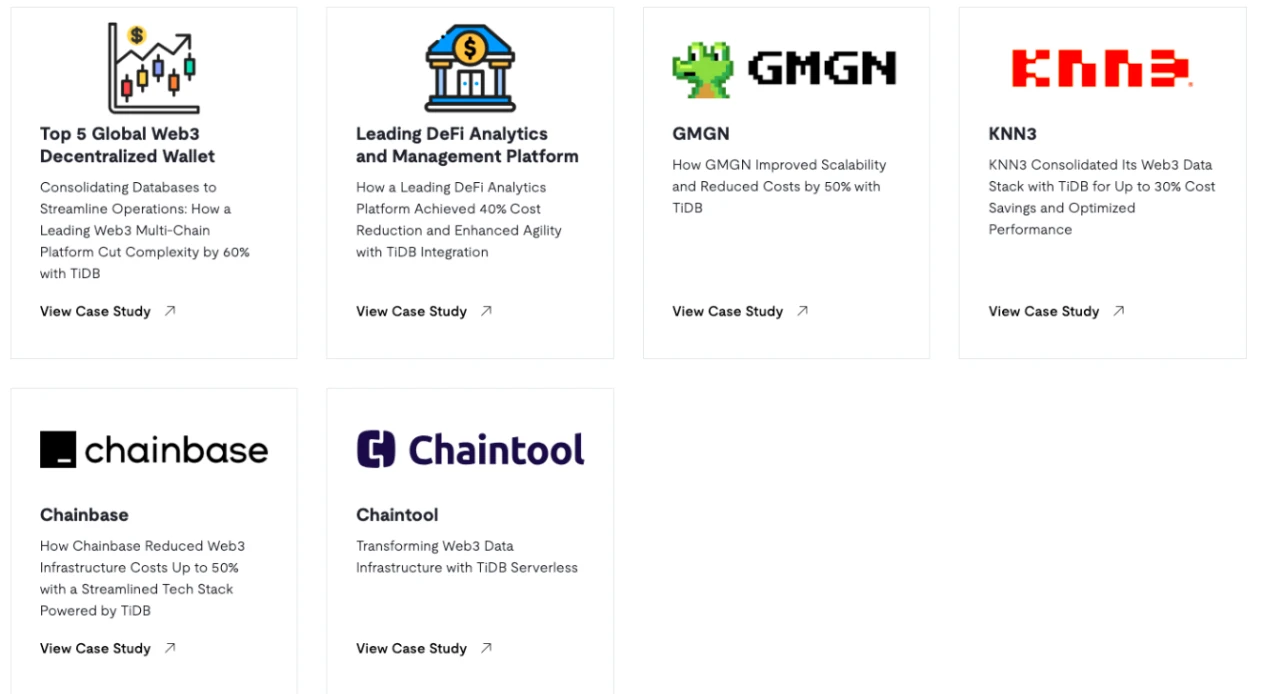Original | Odaily Planet Daily (@OdailyChina_)
_

Every time a narrative explodes in Web3, it not only brings wealth effects to users but also opportunities for entrepreneurs. Memes are the most notable narrative in this cycle, bringing wealth effects far exceeding traditional altcoins, leading a large number of players to migrate from secondary markets and centralized exchanges to on-chain, with new user tags like Pionex, on-chain leaders, and devs emerging.
For entrepreneurs, the user demand in this wave of meme frenzy is for fast and secure meme trading tools, making it undoubtedly the main battlefield for competition, giving rise to excellent meme trading tools like GMGN, OKX Wallet, Bullx, and Axiom. In the Chinese-speaking region, the most popular meme tool is undoubtedly GMGN, which at its peak had a monthly revenue exceeding 10 million, with daily revenue even surpassing Uniswap.
However, as GMGN's business grew, the sharp increase in user numbers and trading volume led to enormous storage capacity and computing demands, significantly impacting the AWS Aurora database initially used by GMGN, thus hindering business growth. It is worth noting how many meme trading tools have been crushed on the beach due to their inability to handle massive user traffic and data service pressure.
Ultimately, GMGN chose to migrate its data from AWS Aurora to the open-source distributed SQL database TiDB, effectively improving the system's scalability and computing power, allowing it to quickly process on-chain data and respond to user growth even during the peak of the meme market. This increased business agility by 30% while reducing operational costs by 50%.
Today, GMGN supports multi-chain meme trading, including Solana, BSC, Ethereum, Base, Tron, and Blast. According to Dune, GMGN's fee revenue on the Solana chain alone has exceeded $71 million, with users reaching 743,000. GMGN's successful experience can also provide reference and inspiration for entrepreneurs in other Web3 sectors.
1. GMGN's Path to Advancement
2024 is set to be the year of meme explosion, with Pump.fun unifying the meme coin issuance standards, allowing meme coins to be continuously produced in a factory assembly line manner. According to Dune, Pump.fun has launched over 10 million meme coins, with cumulative fee revenue exceeding $680 million. The explosion of Pump.fun has also led many entrepreneurial teams to flood into the development of downstream meme trading tools.
Contrary to common sense, GMGN was actually born before Pump.fun. Back in 2023, the Solana meme coin market had not yet exploded, with only Ethereum occasionally producing some meme coins. However, GMGN founder Haze had already sensed the enormous business opportunities that meme coins could bring, stating, “They are low-cost, efficient, and can quickly issue assets by combining trends and emotions. This is not just a segment of blockchain; it is the ultimate embodiment of asset issuance.”
Thus, a tool focused on on-chain trading with data visualization capabilities—GMGN—was born in June 2023. GMGN initially targeted the Ethereum chain, but the results were not significant. To expand the market, Haze began considering expansion to chains like Solana, Blast, and Base.
Finally, in 2024, the opportunity arrived. With the birth of Pump.fun and the explosive popularity of BOME in March 2024, the Solana meme coin market surpassed Ethereum, experiencing exponential growth. GMGN also launched Solana meme coin trading and on-chain analysis in April 2024, successfully seizing this opportunity. By November 2024, GMGN's data experienced its first significant explosion, with daily peak transaction numbers exceeding 500,000, followed by a second wave of data explosion in January 2025, with daily transaction volume reaching $230 million.
Although most of GMGN's users are post-2000s, Haze is a post-85er. Before founding GMGN, Haze was a quantitative grid trader, and this experience not only deepened his understanding of the blockchain industry but also enhanced his perception of "speed."
“GMGN was actually created to solve a pain point, to be fast,” Haze stated during a keynote speech titled “GMGN Born for Speed” at the 2025 Hong Kong Web3 Carnival. He specifically divided speed into four types: rapid discovery, rapid decision-making, rapid operation, and rapid execution.
What truly made GMGN widely popular was its pioneering "mouse warehouse" feature, which addressed the most pressing concerns of users during meme trading, bringing conspiratorial groups to light and genuinely helping users make quick decisions. Subsequently, GMGN continuously enriched the dimensions of data, adding new tags like diamond hands, paper hands, VCs, and smart money, while also linking on-chain addresses with KOL social accounts, allowing the community to objectively assess the "meme trading ability" of various KOLs.
Today, many meme trading tools are replicating GMGN's features and completing better iterations. Facing the rise of latecomers, GMGN, which has developed for two years, does not appear overly anxious but continues to serve its loyal community users while actively participating in public chain construction in its own way. “We are public chain builders; we made $60 million on Solana, but we haven't sold any, all are staked,” Haze proudly stated on stage.
2. TiDB Builds a Web3 Data Foundation for GMGN
As the meme coin market gradually heated up, GMGN also faced pressure. “GMGN's servers were overwhelmed six times in four days,” Haze mentioned in an interview with Wu Shuo in November 2024, discussing the issues brought about by user and transaction growth.
The database is the underlying force supporting the operation of apps/dApps, so ordinary users do not directly interact with it. In the early stages of entrepreneurship, GMGN primarily used the AWS Aurora database to store a large number of real-time transaction records and smart contract data, which were then integrated and pre-processed through applications.
However, as the business expanded and faced the massive growth of Web3 data and user activity, GMGN encountered the following database challenges:

- Poor Scalability
With the rapid increase in Web3 data and user numbers, GMGN's database at the time struggled to scale effectively. According to Dune data, in November 2024, GMGN's platform user numbers and transaction volumes experienced their first explosive growth, with daily transactions peaking at 495,000 and active addresses nearing 300,000; in January 2025, a second wave of explosive growth occurred, with daily transactions peaking at 782,000 and active addresses growing to 430,000.

However, as shown in the above image, on-chain market conditions are also cyclical. AWS Aurora primarily relies on vertical scaling for expansion, which cannot adapt to the rapid changes in on-chain user traffic and data processing demands. This can lead to database crashes during peak trading periods and idle databases during low trading periods, increasing operational costs.
- Poor Data Query Performance
Web3 data is not only large but also requires real-time updates. A complete Solana or Ethereum node needs to store 1-2TB of data, especially since GMGN also involves multiple chains, making data queries more challenging. Due to the heavy load, general databases like AWS Aurora perform poorly in supporting complex queries, necessitating a system capable of quickly and accurately processing large amounts of data queries.
- Poor Agility
The complexity of the database architecture can lead to high development and maintenance costs. GMGN was forced to assemble a data analysis team with big data processing and multi-blockchain expertise to maintain multiple database instances, which not only increased the team's operational costs but also severely damaged GMGN's agility as a startup.
At the same time, the key to Web3 data services is ensuring that data is always accessible and not rendered unusable due to any single point of failure. This forced GMGN to maintain multiple database instances, which also harmed GMGN's business agility and adaptability.
TiDB Helps GMGN Improve Scalability and Reduce Costs
In the face of these challenges, GMGN spent two weeks integrating all Aurora MySQL databases into a cloud solution called TiDB, which helped improve scalability and reduce operational costs.
TiDB is an open-source distributed SQL database developed by PingCAP in 2015. In simple terms, TiDB can efficiently support large-scale on-chain data storage, OLTP queries, and real-time analytics in the Web3 field, enabling the fastest acquisition of on-chain data insights and providing efficient, reliable, and manageable database solutions for data-driven platforms.
- Simplified Existing Architecture, Reducing Operational Costs by 50%
First, TiDB helped GMGN simplify its database architecture. In the original architecture, data from different chains (e.g., ChainA, ChainB, or ChainC) was stored in separate MySQL databases and then processed through a data platform. In TiDB's data architecture, all data from different chains is directly stored in TiDB, as shown below.

The benefit of this approach is that GMGN no longer needs to maintain multiple independent databases, reducing operational complexity and lowering GMGN's operating costs by 50%. Additionally, with a unified data storage layer, GMGN only needs to import newly generated blockchain data into TiDB in real-time, making it easier for GMGN to achieve data consistency and transaction management.
- Providing Horizontal and Elastic Scalability
As a distributed database, TiDB has good horizontal scalability (handling more load by adding nodes), helping GMGN seamlessly scale to handle rapid data and user growth without affecting performance.
Moreover, TiDB's elastic scalability is well-suited to the rapid changes in on-chain user traffic and data processing demands. In TiDB, computing resources and storage resources can be scaled independently, allowing for online expansion or contraction of computing and storage as needed, thus flexibly responding to peak traffic or surges in data volume.
- HTAP Function Significantly Enhances GMGN's Data Query Capabilities
In the face of challenges regarding on-chain real-time query capabilities and support for complex queries, TiDB's HTAP feature has significant advantages, supporting real-time online transaction processing (OLTP) and online analytical processing (OLAP), meeting the needs for real-time data writing and analysis of blockchain data.
In practice, GMGN only needs to use some simple SQL queries to easily meet big data processing requirements, eliminating concerns about data synchronization, cleaning, and other processing issues. The data query response time for normal business queries has improved to single-digit millisecond latency on average compared to before the migration.
- Business Agility Increased by 30%
The improved architecture of TiDB allows the GMGN team to no longer maintain multiple separate databases. TiDB automatically maintains multiple data replicas and has automatic fault detection and recovery features, providing GMGN with enterprise-level high availability. At the same time, TiDB is a fully managed SaaS service, requiring no involvement from GMGN in database maintenance and operational issues. With professional support from PingCAP, GMGN can quickly resolve issues, ensuring rapid and stable business operations.
This provides GMGN with very reliable system stability, allowing it to focus on product development and enhancing user experience, with business development agility increased by 30%.
3. TiDB's Web3 Data Service Blueprint
Of course, TiDB is not "customized" for GMGN; in fact, many well-known Web2 and Web3 companies are already using TiDB's services. Web2 companies include Meituan, Xiaohongshu, Xiaomi, and China Merchants Bank, while Web3 includes a leading global DeFi data platform, Chaintool, and a top decentralized wallet in Asia. TiDB has received over 37,000 stars on GitHub and is becoming an important data service provider in the Web3 field.

TiDB's Web3 Service Cases
Looking across the entire Web3 industry, whether it is DEXs, on-chain tools, or games, they all face issues such as storage pressure, computational challenges, and insufficient complex data processing capabilities. Open-source distributed SQL databases like TiDB are addressing these pain points for Web3 projects.
Project teams no longer need to worry about whether the growth of on-chain node data will degrade user experience; whether increased user access frequency and data surges will cause server downtime; or whether a single node failure will halt business operations. TiDB acts like a resilient and controllable foundation, allowing Web3 entrepreneurs to focus more on iterating functionality and user experience.
References
Full Text of Haze's Speech at the Hong Kong Carnival: GMGN Born for Speed
Dialogue with GMGN HAZE: From "Dog Punching Fool" to Advisor of the Memecoin Trading Paradise
免责声明:本文章仅代表作者个人观点,不代表本平台的立场和观点。本文章仅供信息分享,不构成对任何人的任何投资建议。用户与作者之间的任何争议,与本平台无关。如网页中刊载的文章或图片涉及侵权,请提供相关的权利证明和身份证明发送邮件到support@aicoin.com,本平台相关工作人员将会进行核查。




